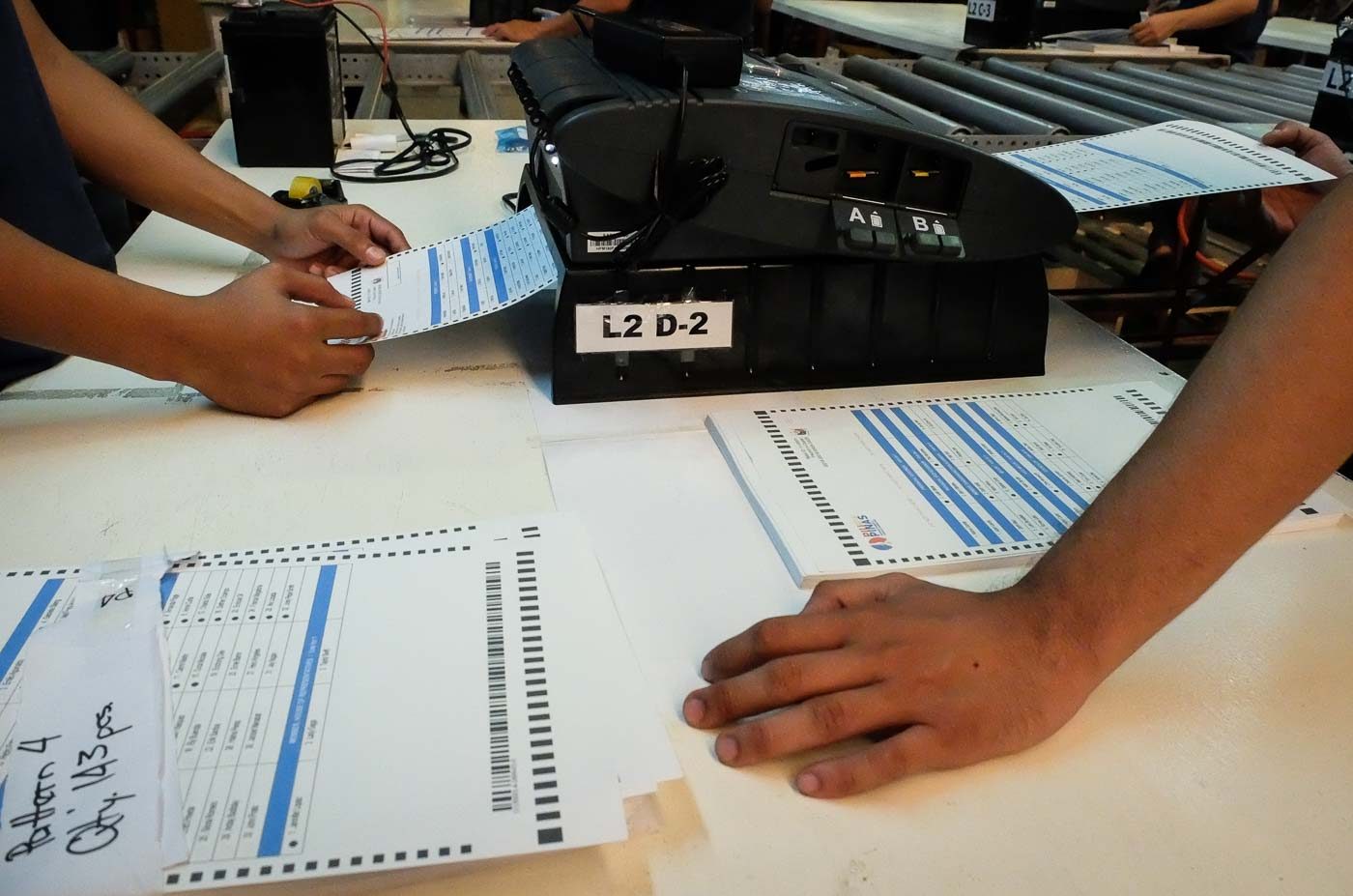SUMMARY
This is AI generated summarization, which may have errors. For context, always refer to the full article.

MANILA, Philippines – Even as candidates criticized the Commission on Elections (Comelec) for crunch-time errors in the voting system, technology provider Smartmatic downplayed the glitches found in vote-counting machines less than 3 months before the May 9 elections.
“The observations made in the ballot verification tests are no cause for alarm,” Smartmatic project director and general manager Elie Moreno said in a statement Thursday, February 11.
This comes after vote-counting machines rejected 1-2% of 50,000 ballot papers in a recent test.
If the vote-counting machines rejected 2% of the actual ballots on election day, that would mean 1.14 million ballots going to waste.
The Comelec plans to print 57 million ballots for the May 9 elections.
Moreno, however, clarified that the ballots used in the tests “are not the same final ballots” to be used on election day. The ballots in the tests had been “only used for training purposes.”
“Having identified the issue this early before the printing of the official ballots allowed us to resolve it, with the objective to ensure that a similar scenario will not arise with the official ballots,” Moreno said.
New feature cited
The Comelec earlier attributed the rejected ballots to the new “self-diagnostic feature” of vote-counting machines. This feature allows the machines to reject ballots with stray marks.
Bautista said the Comelec had the “self-diagnostic feature” installed to avoid a repeat of a problem in the May 2013 elections.
Back then, the vote-counting machines reportedly produced “digital lines.” The machines later detected these digital lines as “shades” or votes on ballots. (READ: ‘Dagdag-bawas’ through ‘digital lines’ in PCOS?)
Bautista said the Comelec wants to prevent digital lines, even as it wants to resolve the current problem in vote-counting machines.
This is why the Comelec has ruled out removing the “self-diagnostic feature.”
Instead, the Comelec has chosen to change the “sensitivity” of the vote-counting machines. This will make the equipment less stringent in rejecting ballots with stray marks.
To change this “sensitivity,” the Comelec now has to rebuild the source code, or the “master blueprint,” of the vote-counting machines.
Bautista said rebuilding the source code will take only a few hours.
Moreno said the adjustment needed “is minor and can be made quickly.”
‘Sinister personalities’ hit
The Smartmatic official added that tests “are conducted precisely to identify improvements” that are needed.
He said there is “sufficient time to address identified issues several months ahead of election day.”
Candidates, however, aired their concerns despite assurances from the Comelec and Smartmatic that the elections will fully take place on May 9.
The party of Vice President Jejomar Binay, a leading presidential candidate, described the reported glitches as “a cause for alarm.”
United Nationalist Alliance spokesman Mon Ilagan said, “We should not allow sinister parties to manipulate the elections, and Comelec must see beyond these delays and glitches and probe if there are quarters from within who are present to influence and exploit the situation.”
The camp of presidential aspirant Grace Poe and her running mate, Francis Escudero, also weighed in on the issue.
The tandem, through their lawyer George Garcia, urged the Comelec to hold a dialogue with stakeholders like them to quell their concerns.
Garcia said a dialogue, among other things, will “dispel” negative reports regarding the vote-counting machines. – Rappler.com
Add a comment
How does this make you feel?
There are no comments yet. Add your comment to start the conversation.